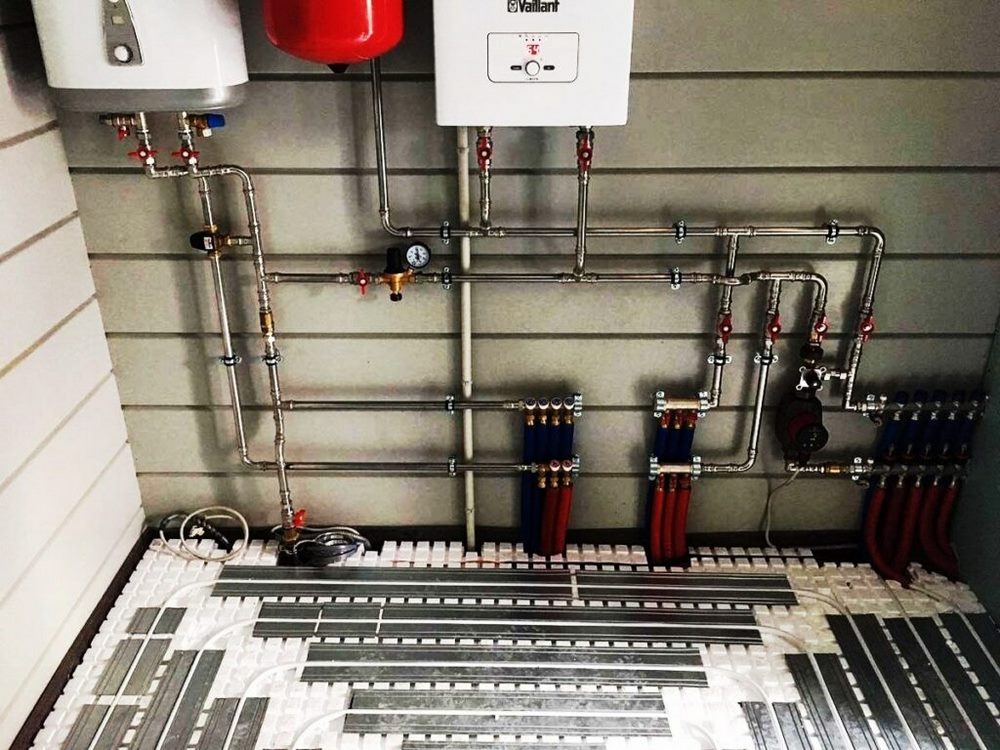Strapping pellet boiler in home heating and installation features
The heating system must maintain a comfortable atmosphere inside the house and outbuildings in winter. Professional piping of boilers, preferably made according to a preliminary design, allows you to achieve a uniform temperature in all areas of the house. Another function of the strapping is to protect the equipment from overheating and damage. An automatic pellet boiler and heating based on it requires a qualified approach to connecting radiator circuits, air ducts and local heating devices.
The work of piping heating equipment must be entrusted to professionals. Moreover, an automatic pellet boiler is an expensive pleasure, and the manufacturer provides a guarantee only if the technical requirements for the connection are met. But it's not about the guarantee, but about the pleasure of a comfortable temperature in the house in any weather conditions.

At the same time, specialists will agree with our statement that a pellet boiler and heating can be installed and started without the help of qualified specialists. But the person who undertook to make the piping must study the principles of the correct installation of boilers.
In this article, we will touch upon popular schemes and talk about some of the features of connecting pellet boilers, which distinguish them from other heating equipment.
Considering that pellet boilers and heating based on them is recommended when heat supply is required without gas and when it is impossible to connect to the main networks, this is a hot topic for many readers.
What is boiler piping?
The piping of boiler equipment is a set of pipe fittings used when connecting heating devices designed to solve the following problems:
- pressure control;
- removal of scale and slag from the coolant;
- compensation for excessive thermal expansion;
- connection of one or more heating circuits using collectors and a hydraulic arrow;
- removal of air dissolved in heat carriers;
- automatic settings of work parameters.
Despite the fact that all buyers expect to see completely autonomous equipment in a pellet boiler, this is a mistake. However, consumers implement some automation tasks using strapping. In particular, the simplest analog temperature sensor that controls the pump allows you to take over part of the automation work. Alternatively, a hydraulic arrow in the system in an analogous way solves the problem of excessive thermal expansion and water hammer. The security team will help out in case the boiler does not cope with its tasks.
And this is already a decision of the master, whether it is worth installing duplicate piping elements already available in the boiler system.
Choice of circulation method
Craftsmen usually offer a choice of circulation method. But when installing a pellet boiler and heating based on it, forced circulation is recommended. Many owners are worried about the pump's operation when the lights are turned off. If you don't trust generators, power supplies, solar cells and wind turbines, install a pump on bypass. In this case, switching the system to natural circulation as needed.
It should be borne in mind that the radiators must be installed higher than the boiler. The system must have sufficient pressure, the injection of which can be realized at the level of thermodynamic processes in different ways. For calculations of such a system, it is also worth contacting a specialist.
Here are some rules for piping boilers
What you should not give up to reduce the cost of the system:
- collector wiring allows you to organize independent low and high temperature heating (warm floors and radiators);
- if possible, abandon the general circular heating circuit, this limits the possibilities of adjustment;
- use, in addition to the collectors, a hydraulic arrow in the system, it acts as a compensation tank.
Boilers may not have the required automatic functions. Wizards implement them using external devices. In particular, the boiler operation is adjusted depending on the sensors and thermostat data. Which is very convenient for the implementation of the functions of the "Smart Home".
Detailed diagrams of piping of boilers are given in our engineering section.






